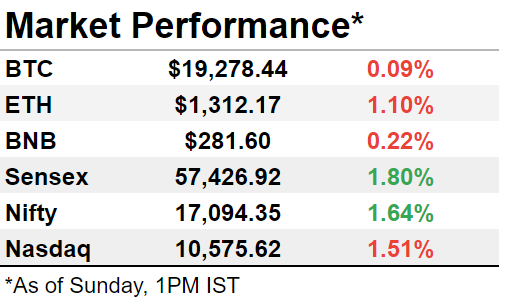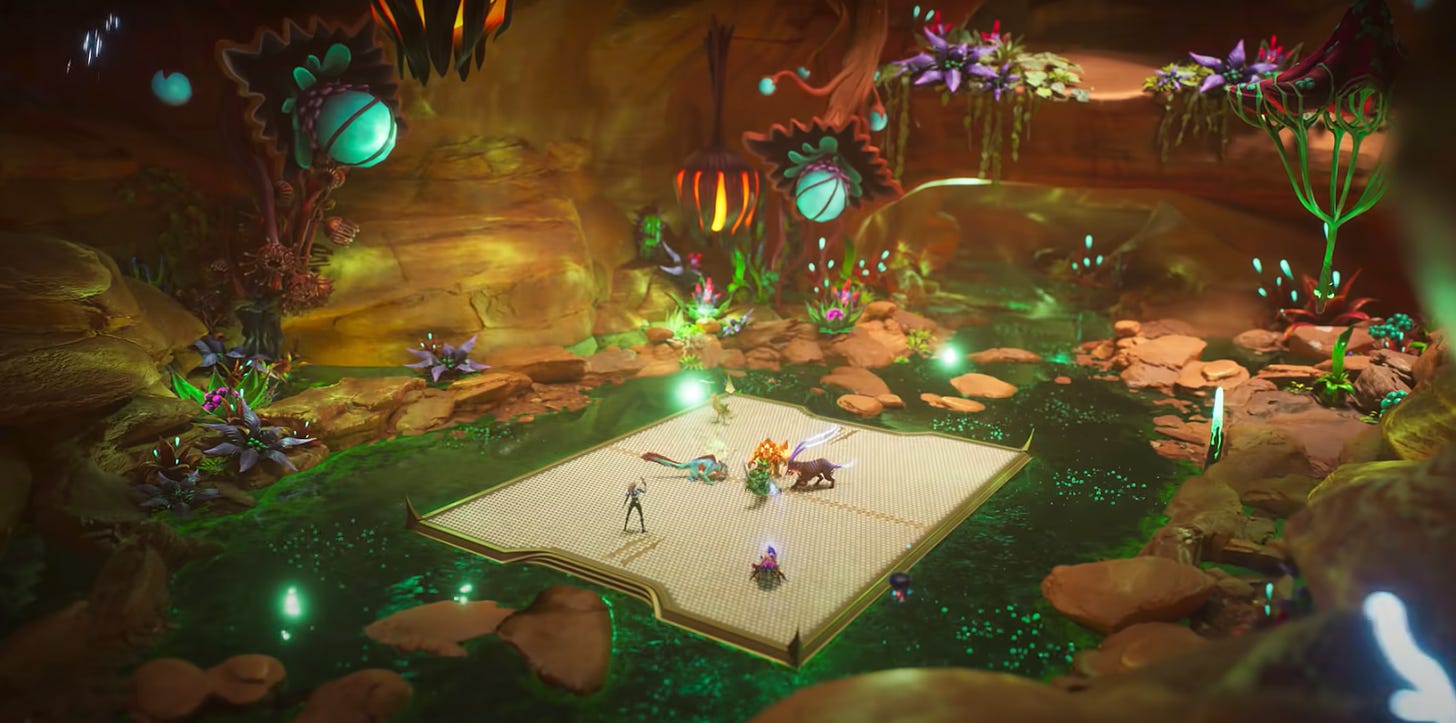Good morning! Welcome to The Daily Moon. It’s a brand new week. Sam Bankman-Fried was eyeing Twitter for a while. Chats from the Musk-Twitter legal saga show that SBF was ready to co-own the social media site. SBF wanted to pay $5 billion for the deal. If only Musk agreed.
Moving on, today we talk about a new era of blockchain games, and the crypto debt woes of Latin Americans.
The markets showed a mixed trend. Bitcoin was at ~$19,300 while Ethereum was slipped to $1,300 levels. Nasdaq fell on a technology selloff. Back home, Sensex and Nifty gained after the 0.5% rate hike by RBI.
Source: Illuvium's YouTube channel
Coming Soon: 100% Interoperable Blockchain Games
Play-to-earn (P2E) games are in demand. It is all fun and games, till you scramble to redeem the tokens. The in-game rewards and NFTs are meaningless outside the network. So what really is the use case of these tokens?
Illuvium wants to bring a use case to NFTs. The developers behind the blockchain game want to build a series of interoperable games. This means that players can use the rewards and NFTs across platforms.
So if you have to move NFTs from Axie Infinity to Star Atlas, there is the blockchain hurdle. The NFTs have to move from Axie’s Ethereum-based network to Star Atlas’ Solana network. Without mincing words, it’s a pain.
What is interoperability all about?
Before we get to Illuvium, it is important to understand interoperability. Simply put, it is the ability of applications and products from across platforms to share data with each other. This includes sharing tokens, rewards, NFTs, and so on.
Fully interoperable blockchains can communicate with each other 24/7 without interruptions. There are three things to remember:
The underlying blockchain needs to be interoperable.
Tokens and NFTs need to have use cases across networks.
Reward swaps need to be platform agnostic.
For example, if blockchains are interconnected, Axies created on Axie Infinity can be exchanged for Summoner Cards on Splinterlands.
This is not restricted to crypto and web3 alone. If Illuvium’s project is successful, tokens earned on P2E games could also be used in regular video games.
Why hasn’t this happened yet?
Money. That’s the easiest answer. All gaming companies want to keep money circulating within their platform. Say interoperability was possible. You could, for the sake of argument, buy a skin on Fortnite and use it on PUBG. Now, Fortnite would make the money, but PUBG wouldn’t. Why would PUBG want that to happen? All companies want to maximise their revenue potential.
That’s hurdle 1. Now, let’s say, reluctantly, these companies formed the equivalent of a European Union, where you could move goods and services across borders. But this isn’t IRL. You can’t physically carry your cool weapon from Fortnite to PUBG. PUBG will have to support the code that has created this weapon. This means both companies will have to share not the engine but also the code. Now, the companies will have to work together to make it possible to have the same uses and displays. That’s hard work. And lots and lots of man hours. (It goes back to money).
Now, let’s take it beyond weapons. Let’s say, PUBG and Fortnite didn’t allow you to take the weapon but gave you a token instead. Token costs are different. If you are an Axie player, for instance, your AXS tokens are worth ~$12.75. Splinterlands’ tokens cost ~$0.07 each. Complexity deepens. It would encourage gamers to collect and buy tokens where they get more bang for their buck. Back to money, eh?
How will Illuvium bring a change?
While the game developers haven’t disclosed a lot of details, the Illuvium model will allow complete compatibility with other games.
The interoperable blockchain game or IBG will have a token ILV. These ILVs could be used across gaming platforms, inside and outside the crypto world. Gamers can play and mine resources for other subsequent games. Here’s a hypothetical example of how it’ll work:
Gamers play an IBG and win ILVs.
Some ILVs are used to buy a Mario Kart game on Nintendo.
You collect more in-game tokens and use them for other games.
The remaining ILVs are used to breed Axies and win AXS.
The AXS tokens are finally converted into fiat currency.
Illuvium co-founder Kieran Warwick believes that interoperability will bring 500 million gamers into web3. Warwick expects the game to launch next year. Gamers on Mac, PC, and mobile will be able to access the IBG.
They are not the ones doing this. Decentralised gaming community Saga has similar plans to build an interconnected metaverse where gamers can switch between platforms.
P2E games had a market size of $755 million in 2021 and could reach $3.6 billion by 2028. Interoperability could decide who’ll be the ultimate winner.
Crypto Debt Piles In LATAM
Inflation and high interest rates are worrying the largest economies in the world, but Latin America is something else. As the situation shows no signs of getting better, people in these countries are turning to crypto loans.
Crypto to the rescue
Canada-based lending platform Ledn says the LatAm region accounts for 50% of the loans it has granted. The Latin American crypto exchange Buenbit launched a lending feature in July, which has seen an increase of 70% since it began. Num Finance, which issues cryptocurrencies pegged to LatAm currencies, lent over $250,000 in August.
But why not just go to banks?
Because loans are unaffordable. Bank loan rates in Argentina, for example, are as high as 200% on average. In Brazil, it can be in the region of 170%. People are using crypto as a hedge against inflation. Some of these lenders allow US dollars as collateral for the loans they offer. It also works because the region has few credit options.
And that’s it for today. If this email was forwarded to you, please consider subscribing. It’s free. We’ll never show you an ad or charge you for this. We swear.
Who are we? This newsletter’s ambition is to educate (and to entertain). The world of money is changing everyday and we want to help you decode what’s happening in the world of crypto, public markets in the US and India.





